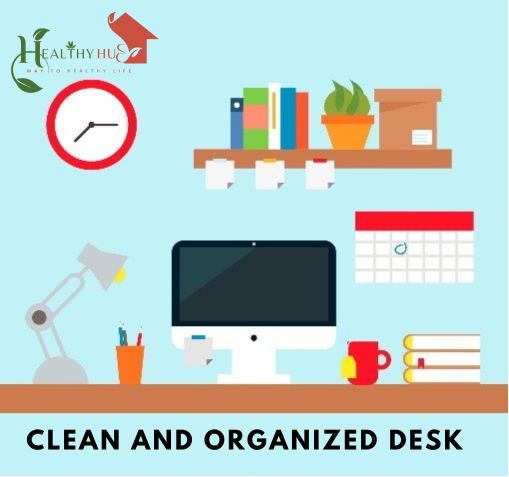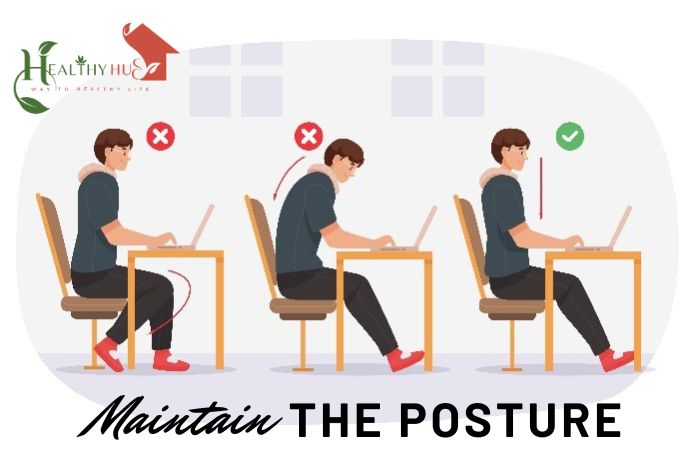You spend a lot of your time at work, so make sure you’re in a healthy office or work environment. We all know that a healthy mind ensures a healthy body, and for a healthy mind, a peaceful, healthy work environment is essential.
The fact is that we all spend a significant time of day at work. So maintaining a workspace that promotes good health and wellness is extremely essential. Now you must be wondering how you can do it. Well, no worries as we are telling you some simple little things to create a healthy work environment. Before got o further lets find the type of work environment.
Types of Work Environments
Choosing the right work environment is crucial for job satisfaction and overall well-being. Each individual has unique preferences and needs when it comes to their workplace. In this article, we will explore various types of work environments and provide guidance on finding the one that aligns with your personality and professional goals.
1. Traditional Office Setting
The traditional office setting is characterized by a physical workplace where employees gather to perform their tasks. This environment often includes cubicles or individual offices and fosters in-person collaboration and communication among team members.
Pros:
- Facilitates face-to-face interactions.
- Promotes teamwork and camaraderie.
- Provides access to office resources and equipment.
Cons:
- May be rigid in terms of work hours.
- Commuting can be time-consuming.
- Limited flexibility for remote work.
2. Remote Work
Remote work has gained popularity in recent years, allowing employees to work from the comfort of their homes or any location with internet access. This environment relies heavily on digital communication and virtual collaboration tools.
Pros:
- Flexible work schedule and location.
- Reduced commuting stress and expenses.
- Increased autonomy and work-life balance.
Cons:
- Potential feelings of isolation.
- Dependence on reliable internet connectivity.
- Blurred boundaries between work and personal life.
3. Coworking Spaces
Coworking spaces provide shared workspaces where individuals from different companies and professions can work side by side. These environments often promote networking and community-building among members.
Pros:
- Networking opportunities with diverse professionals.
- Access to shared amenities and facilities.
- Less isolation compared to remote work.
Cons:
- Distractions from other coworkers.
- Membership fees may add to expenses.
- Limited personalization of workspace.
4. Startups and Small Businesses
Working for a startup or a small business offers a dynamic and close-knit work environment. Team members often wear multiple hats and collaborate closely to achieve shared goals.
Pros:
- Greater involvement in company decisions.
- Opportunity to make a significant impact.
- More flexible and adaptive work culture.
Cons:
- Financial uncertainty of a young business.
- Heavier workload and long hours.
- Limited growth opportunities in small teams.
5. Corporate and Large Organizations
Large corporations provide a structured and hierarchical work environment. Employees may have specialized roles and work within established processes.
Pros:
- Clear career paths and advancement opportunities.
- Comprehensive employee benefits.
- Stability and established reputation.
Cons:
- Bureaucratic decision-making processes.
- Limited autonomy and flexibility.
- Potential for feeling disconnected from company values.
6. Creative and Artistic Spaces
For individuals in creative fields, working in artistic spaces or studios can be highly rewarding. These environments nurture innovation and artistic expression.
Pros:
- Inspiring and collaborative atmosphere.
- Opportunities for creative growth and experimentation.
- Connection with like-minded individuals.
Cons:
- Irregular income and project-based work.
- Competitive nature of the creative industry.
- Balancing creativity with business aspects.
7. Academia and Research Institutions
Academic and research settings are ideal for those passionate about knowledge and discovery. These environments emphasize learning, critical thinking, and intellectual pursuits.
Pros:
- Opportunities for professional development and education.
- Engaging in cutting-edge research.
- Contribution to society through knowledge dissemination.
Cons:
- Pressure to publish and secure funding.
- Long academic career paths.
- Limited job openings in some research fields.
8. Hybrid Work Environments
Hybrid work environments blend elements of different types of workplaces to cater to employees’ varied needs. This approach may involve a mix of office-based and remote work.
Pros:
- Enhanced flexibility and work-life balance.
- Tailored to individual preferences.
- Increased adaptability to changing circumstances.
Cons:
- Requires efficient communication and collaboration tools.
- Potential challenges in maintaining team cohesion.
- Dependent on company policies and infrastructure.
How to Find the Right Work Environment for You
Finding the right work environment is essential for your professional success and overall happiness. By understanding the various types of work environments and aligning them with your personality and preferences, you can embark on a fulfilling career journey. Remember to be patient and open-minded as you explore different opportunities, and trust that the right work environment for you is out there waiting to be discovered.
1. Assess Your Personality and Work Style: Consider your preferences regarding social interactions, independence, and routine. Reflect on past work experiences to identify patterns that align with your ideal work environment.
2. Clarify Your Priorities: Determine what aspects are most important to you in a work environment—such as work-life balance, career growth, or job stability—and prioritize them accordingly.
3. Research Companies and Industries: Explore various companies and industries to understand their work cultures and values. Look for organizations that resonate with your goals and aspirations.
4. Seek Feedback: Connect with current or former employees of companies you are interested in to gain insights into their work environment. Online platforms like Glassdoor can provide employee reviews.
5. Try Out Different Environments: If possible, take advantage of internships, freelance opportunities, or temporary positions to experience different work environments first hand.
6. Consult with Career Counselors: Seek guidance from career counselors or mentors who can help you navigate your career path and find the right work environment.
7. Trust Your Instincts: Ultimately, trust your gut feeling when making a decision. Your intuition can often guide you toward an environment where you will thrive.
Lets talk about some Characteristics of a Positive one.
The Characteristics of a Positive Work Environment
A positive work environment is not just a desirable luxury but a crucial factor for the success and well-being of employees and the overall organization. It is a space where employees feel valued, motivated, and empowered to perform their best. In this article, we will explore the essential characteristics of a positive work environment and understand how fostering such an environment can lead to increased productivity, job satisfaction, and overall happiness in the workplace.
1. Clear Communication
Transparent and effective communication is the backbone of a positive work environment. It involves open and honest interactions between employees and management, where feedback is encouraged and actively listened to. Clear communication helps in preventing misunderstandings, building trust, and fostering a sense of belonging among team members.
2. Supportive Leadership
Positive work environments are often cultivated by supportive leaders who prioritize their employees’ well-being. These leaders inspire and motivate their teams, recognize and celebrate accomplishments, and provide constructive feedback for growth and development. Supportive leaders create a sense of psychological safety, where employees feel comfortable expressing their ideas and concerns.
3. Opportunities for Growth
In a positive work environment, employees are provided with opportunities for professional and personal growth. This may include access to training programs, skill development workshops, mentorship, and career advancement opportunities. When employees see a clear path for growth within the organization, they are more likely to be engaged and committed to their roles.
4. Work-Life Balance
Employers who prioritize work-life balance demonstrate a commitment to their employees’ overall well-being. They offer flexible work arrangements, encourage breaks, and discourage overworking. Striking a healthy balance between work and personal life enhances employee satisfaction and reduces burnout.
5. Respect and Inclusion
A positive work environment is characterized by a culture of respect and inclusion. Employees from diverse backgrounds feel valued and appreciated for their unique contributions. Organizations that promote inclusivity create a strong sense of belonging, which fosters creativity, collaboration, and innovation.
6. Recognition and Rewards
Recognizing and rewarding employees’ efforts and achievements is a fundamental aspect of a positive work environment. Whether through verbal praise, formal awards, or monetary incentives, acknowledging hard work reinforces a culture of excellence and motivates employees to continue performing at their best.
7. Teamwork and Collaboration
Positive work environments emphasize the value of teamwork and collaboration. Employees are encouraged to work together, share ideas, and support each other’s success. Strong team dynamics create a cohesive and harmonious work atmosphere.
8. Positive Work Culture
The overall work culture significantly impacts the work environment. Positive work cultures promote trust, autonomy, and camaraderie among employees. When colleagues are genuinely supportive and encouraging, it fosters a sense of community and loyalty.
9. Safe and Healthy Physical Environment
A physically safe and healthy work environment is vital for employee well-being. Organizations must provide a clean, ergonomic workspace and follow safety protocols to minimize the risk of accidents or health issues.
10. Opportunities for Feedback and Input
Employees thrive in environments where their opinions are valued. Providing channels for employees to offer feedback and contribute ideas empowers them to take ownership of their work and feel invested in the organization’s success.
11. Flexibility and Adaptability
Positive work environments embrace flexibility and adaptability. Whether it’s adapting to changes in the industry or accommodating employees’ individual needs, a flexible approach fosters a resilient and agile workplace.
12. Celebrating Diversity
Organizations that celebrate diversity and promote an inclusive environment create a rich tapestry of perspectives and ideas. Embracing diverse viewpoints leads to greater innovation and a broader understanding of customer needs.
13. Encouraging Social Connections
Positive work environments recognize the importance of social connections among employees. Encouraging team-building activities and fostering a friendly atmosphere cultivates a sense of belonging and camaraderie.
14. Work that Aligns with Values
Employees are more engaged and satisfied when their work aligns with their values and passions. Organizations that prioritize meaningful work and a sense of purpose inspire greater commitment from their workforce.
15. Empowerment and Autonomy
Positive work environments empower employees by giving them the autonomy to make decisions and take ownership of their projects. Empowered employees are more proactive, innovative, and invested in their work.
A positive work environment is the foundation of a thriving and successful organization. By prioritizing clear communication, supportive leadership, opportunities for growth, work-life balance, and a culture of respect and inclusion, organizations can create a workspace where employees feel motivated, engaged, and fulfilled. Investing in a positive work environment not only benefits the well-being of employees but also leads to increased productivity, creativity, and overall business success.
Maintain Your Work Environment for a Healthy Lifestyle
In today’s fast-paced world, maintaining a healthy lifestyle has become crucial for overall well-being and productivity. One significant aspect that often gets overlooked is our work environment. Creating a conducive and healthy workspace not only enhances productivity but also promotes physical and mental well-being. In this article, we will explore various strategies to maintain a work environment that fosters a healthy lifestyle.
1. Organize Your Workspace
A cluttered and disorganized workspace can negatively impact your focus and productivity. Take the time to declutter and organize your desk and surroundings. Invest in storage solutions like shelves, cabinets, and drawer organizers to keep things in order.
2. Ergonomic Furniture
Sitting at a desk for extended periods can lead to back pain and posture-related issues. Consider investing in ergonomic furniture like an adjustable chair and an ergonomic keyboard and mouse. Ensure that your computer monitor is at eye level to reduce strain on your neck and eyes.
3. Let Natural Light In
Natural light has a positive impact on mood and energy levels. Whenever possible, position your desk near a window to take advantage of natural light. If access to natural light is limited, use full-spectrum light bulbs to mimic natural lighting.
4. Incorporate Greenery
Plants not only add aesthetic appeal to your workspace but also provide numerous health benefits. They purify the air, reduce stress, and boost productivity. Consider adding indoor plants such as spider plants, peace lilies, or succulents to your workspace.
5. Stay Hydrated
Dehydration can lead to reduced focus and energy levels. Keep a water bottle on your desk and make a habit of drinking water throughout the day. This simple practice can significantly impact your overall well-being.
6. Take Regular Breaks
Working for long hours without breaks can lead to burnout and decreased productivity. Schedule short breaks every hour to stretch, walk around, or do some quick exercises. These breaks can help rejuvenate your mind and body.
7. Personalize Your Workspace
Adding personal touches to your workspace can make it feel more comfortable and inviting. Decorate your desk with pictures, motivational quotes, or artwork that inspires you. However, avoid excessive decorations that may cause distractions.
8. Minimize Noise Disturbances
Noise distractions can hinder concentration and productivity. If your workplace is noisy, consider using noise-canceling headphones or soft background music to create a more peaceful atmosphere.
9. Practice Good Posture
Maintaining proper posture while sitting at your desk is crucial for spinal health. Sit with your back straight, shoulders relaxed, and feet flat on the floor. Consider using a lumbar cushion for additional support.
10. Encourage Physical Activity
Incorporate physical activity into your daily routine, even while working. Use a standing desk, take walking meetings, or perform desk exercises to stay active throughout the day.
11. Create a Relaxation Corner
Designate a small area in your workspace for relaxation and meditation. Take short mindfulness breaks to reduce stress and refocus your mind.
12. Foster a Positive Work Environment
A positive work environment is essential for overall well-being. Encourage open communication, support your colleagues, and celebrate achievements together.
13. Limit Screen Time
Excessive screen time can strain your eyes and negatively impact sleep patterns. Take regular screen breaks and follow the 20-20-20 rule—look away from your screen every 20 minutes, focus on something 20 feet away for 20 seconds.
14. Prioritize Work-Life Balance
Maintaining a healthy work-life balance is crucial for preventing burnout. Set boundaries, avoid overworking, and make time for hobbies, family, and self-care.
TIP # 02 | Top 5 General tips for Maintain your Work Environment
1. Clean and Organized Desk
First of all, always remember to have a clean and organized desk, as a cluttered workspace can be distracting and stressful. Keeping everything in order will make you feel satisfied and will definitely increase your productivity.

2. Screen Break
Secondly, always remember to take a screen break in your day and have a walk. It will stretch your legs, comfort your eyes, and helps you get clear thoughts and ideas.

3. Healthy Snacks
Another important thing is to have healthy snacks within your reach. It will help you to fulfill your untimely appetite during the day and keep you away from unhealthy, sugary snacks; maintaining your weight, energy levels, and well-being.

4. Maintain The Posture
lso, you must maintain your posture while sitting, as sitting all day long can take a toll on your back and neck. Always remember to have support for your back and make sure that your chair has optimum height according to the table.
Oh! And also don’t forget to stretch your hands and legs.

5. Relieve Stress
Lastly, don’t forget to remind yourself that undue stress is not of any help, infect it decreases your ability to perform. So keep yourself stress-free by delegating responsibilities, remaining calm and composed, and taking breaks.

In conclusion for a healthy lifestyle and a productive day, you have to make these small efforts. Just give them a try and u will see some changes by yourself. Your work environment significantly influences your physical and mental well-being. By organizing your workspace, incorporating greenery, staying hydrated, and fostering a positive work environment, you can create a healthy and productive workspace. Remember to prioritize work-life balance and practice self-care to achieve a harmonious lifestyle.
Dr. Zarmina Haroon





